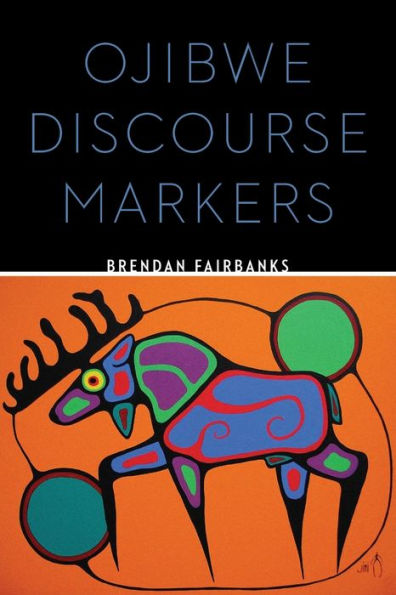

Paperback(Reprint)
-
PICK UP IN STORECheck Availability at Nearby Stores
Available within 2 business hours
Related collections and offers
Overview
Brendan Fairbanks examines the challenging subject of discourse markers in Ojibwe, one of the many indigenous languages in the Algonquian family. Mille Lacs elder Jim Clark once described the discourse markers as “little bugs that are holding on for dear life.” For example, discourse markers such as mii and gosha exist only on the periphery of sentences to provide either cohesion or nuance to utterances. Fairbanks focuses on the discourse markers that are the most ubiquitous and that exist most commonly within Ojibwe texts. Much of the research on Algonquian languages has concentrated primarily on the core morphological and syntactical characteristics of their sentence structure. Fairbanks restricts his study to markers that are far more elusive and difficult in terms of semantic ambiguity and their contribution to sentences and Ojibwe discourse. Ojibwe Discourse Markers is a remarkable study that interprets and describes the Ojibwe language in its broader theoretical concerns in the field of linguistics. With a scholarly and pedagogical introductory chapter and a glossary of technical terms, this book will be useful to instructors and students of Ojibwe as a second language in language revival and maintenance programs.
Brendan Fairbanks is an assistant professor of American Indian studies at the University of Minnesota. He is the coeditor of Chi-Mewinzha and is on the editorial staff of the digital Ojibwe People’s Dictionary.

Product Details
| ISBN-13: | 9780803288232 |
|---|---|
| Publisher: | Nebraska |
| Publication date: | 05/01/2017 |
| Edition description: | Reprint |
| Pages: | 222 |
| Sales rank: | 678,298 |
| Product dimensions: | 6.00(w) x 8.90(h) x 0.70(d) |
About the Author
Table of Contents
Preface
Acknowledgments
1. Introduction and background
1.1. The language
1.2. Why study Ojibwe discourse markers?
1.3. Methodology
1.4. Orthography
2. What is a discourse marker?
2.1. Schiffrin’s definition of discourse markers
2.2. Relevance theorists’ view of discourse markers
2.3. Cross-linguistic data
2.3.1. Position
2.3.2. Clitics and affixes
2.3.3. tam (tense-aspect-mode) systems
2.3.4. Simultaneous textual and interpersonal functions of discourse markers
2.4. Defining discourse markers
3. Ojibwe discourse markers
3.1. Discourse connectives
3.1.1. Initial position
3.1.1.1. inashke
3.1.1.2. miinawaa
3.1.1.3. onzaam
3.1.1.4. dibishkoo
3.1.1.5. mii dash
3.1.2. Second position
3.1.2.1. idash as a contrastive marker
3.1.2.1.1. Digressions
3.1.2.1.2. Backgrounding and foregrounding
3.1.2.1.3. idash in adjacency pairs
3.1.3. Preverbs
3.1.3.1. Relative preverb izhi
3.2. Mystery particles
3.2.1. Initial position
3.2.1.1. mii as a veridical marker
3.2.1.2. mii as a command softener
3.2.1.3. awenh, inenh
3.2.1.4. aaniish
3.2.2. Second-position mystery particles
3.2.2.1. isa
3.2.2.1.1. isa as a marker of closings
3.2.2.1.2. isa as a marker of relinquishment
3.2.2.1.3. isa as a marker of conclusory gists
3.2.2.1.4. isa as a marker of resultant action
3.2.2.1.5. isa as a position strengthener
3.2.2.1.6. isa as a placeholder
3.2.2.1.7. sa go
3.2.2.2. gosha
3.2.2.3. sha
3.2.2.4. da
3.2.2.5. bina
3.2.2.6. goda
3.2.2.7. naa
3.2.2.7.1. Second-position discourse clusters with naa
4. Conjunct order as a discourse-marking device
4.1. Sentence-level use of conjuncts
4.1.1. Dependent clauses
4.1.2. Temporal immediacy and the connective feature of the conjunct
4.1.3. Situational immediacy
4.2. Discourse use of conjuncts
5. Conclusion
Notes
Glossary
References
Index
